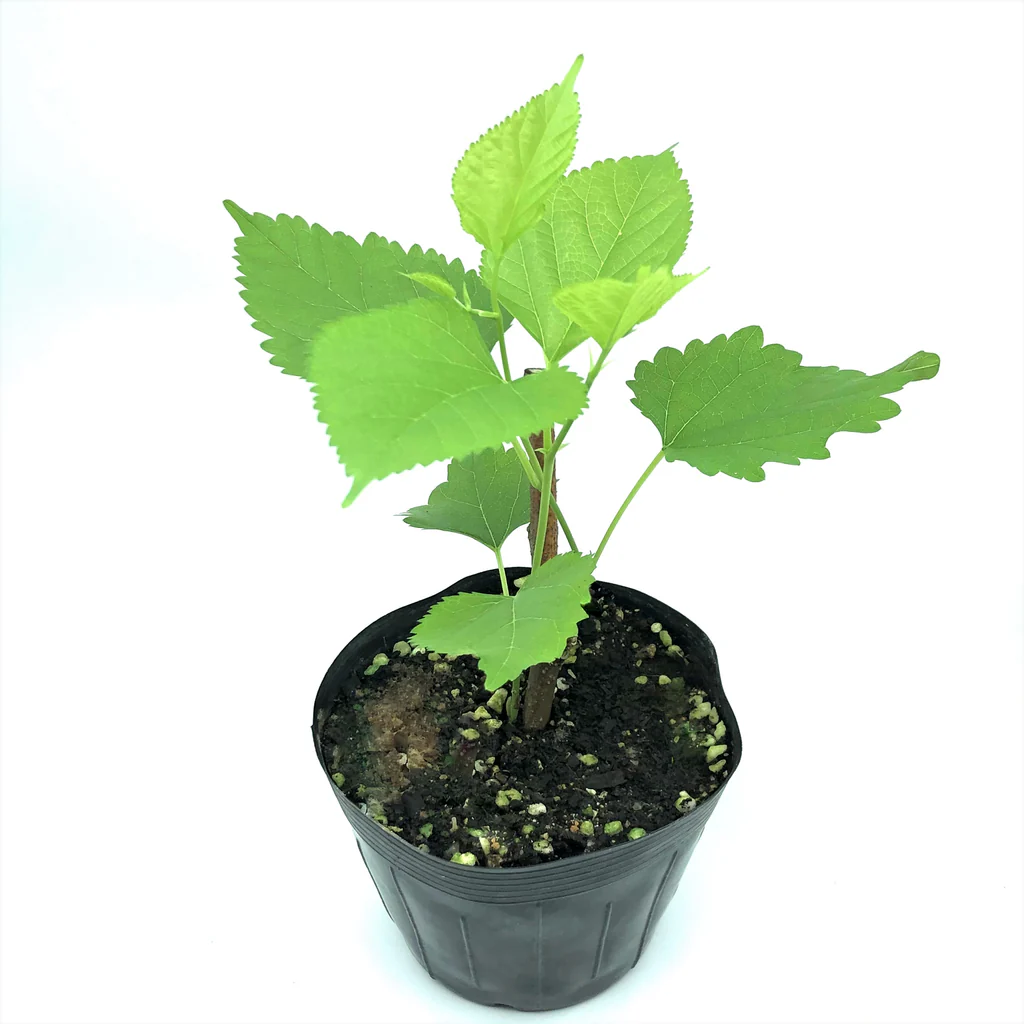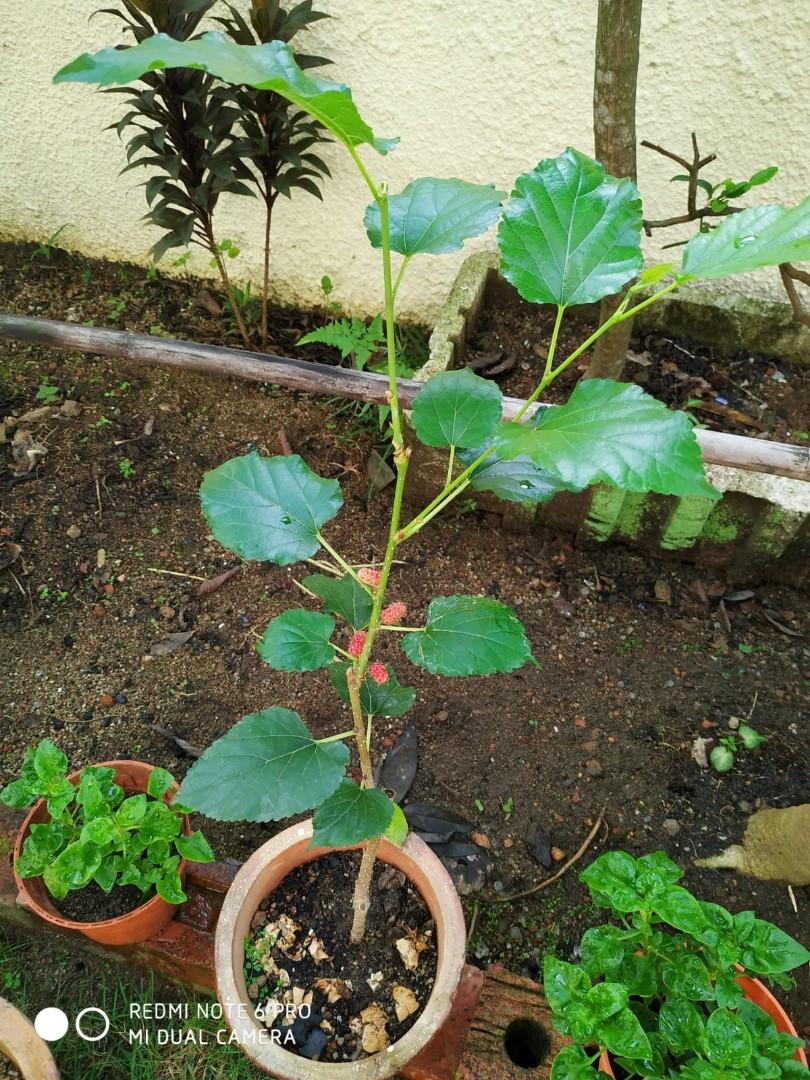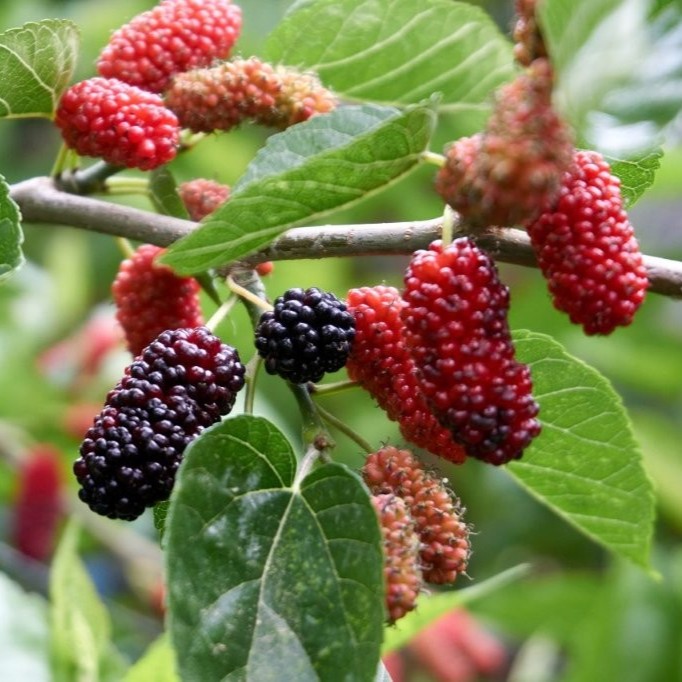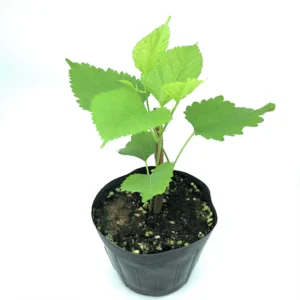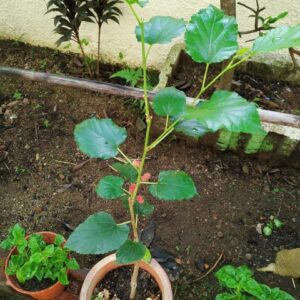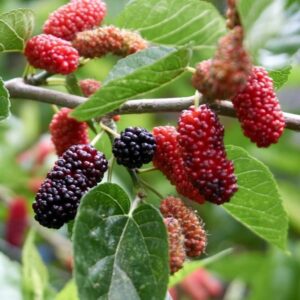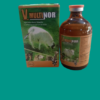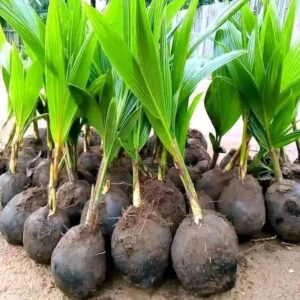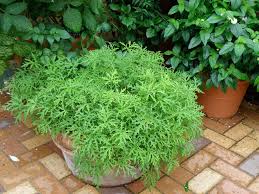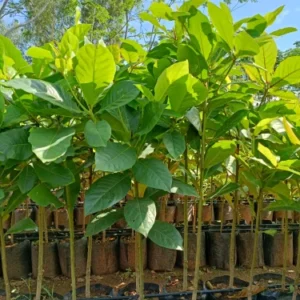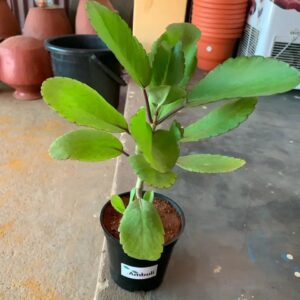🍇 Mulberry Seedlings Guide for Growing
Mulberry is a fast-growing, hardy fruit tree/shrub known for its nutritious berries and high-protein leaves (also used in animal feed and silk production). It grows well in tropical and subtropical regions like Ghana, making it a great choice for farmers, agroforestry, and backyard gardens.
✅ Key Features of Mulberry Seedlings
| Feature | Description |
|---|---|
| 🌱 Plant Type | Shrub or small tree |
| 📏 Height | 3 to 6 meters (can be pruned shorter) |
| ⏳ Fruiting Starts | 6–12 months after planting |
| 🍇 Fruit | Sweet, blackberry-like; eaten fresh or used for juice, jam, wine |
| ☀️ Sunlight | Full sun (at least 6 hours/day) |
| 💧 Water Needs | Moderate – drought-tolerant once established |
| 🌿 Lifespan | 10–15+ years with good care |
🌿 Benefits of Growing Mulberry
-
Fast fruiting – ready to harvest in 1 year
-
Leaves are rich in protein – can feed goats, rabbits, silkworms
-
Grows in poor soils and tolerates pruning
-
Fruits are rich in vitamins C & K, iron, and antioxidants
-
Can be used in home gardens, hedges, or permaculture setups
🌱 How to Grow Mulberry Seedlings
🔹 1. Planting
-
Use seedlings from stem cuttings or seed (cuttings are faster and preferred)
-
Spacing: 3m × 3m for fruit; closer (1m × 1m) for animal feed
-
Plant in loamy soil with compost or poultry manure
🔹 2. Watering
-
Water regularly until established (first 3–4 months)
-
Drought-tolerant afterward but fruits better with watering
🔹 3. Fertilizing
-
Apply organic compost or NPK (10-10-10) every 2–3 months
-
Add potassium to improve fruit size and sweetness
🔹 4. Pruning
-
Prune regularly to shape the plant and improve branching
-
Cut back after fruiting to encourage new growth
🛡️ Pest & Disease Management
-
Generally hardy but may attract:
-
Aphids, mealybugs – use neem oil spray
-
Fungal leaf spots – treat with mild fungicides and avoid waterlogging
-

